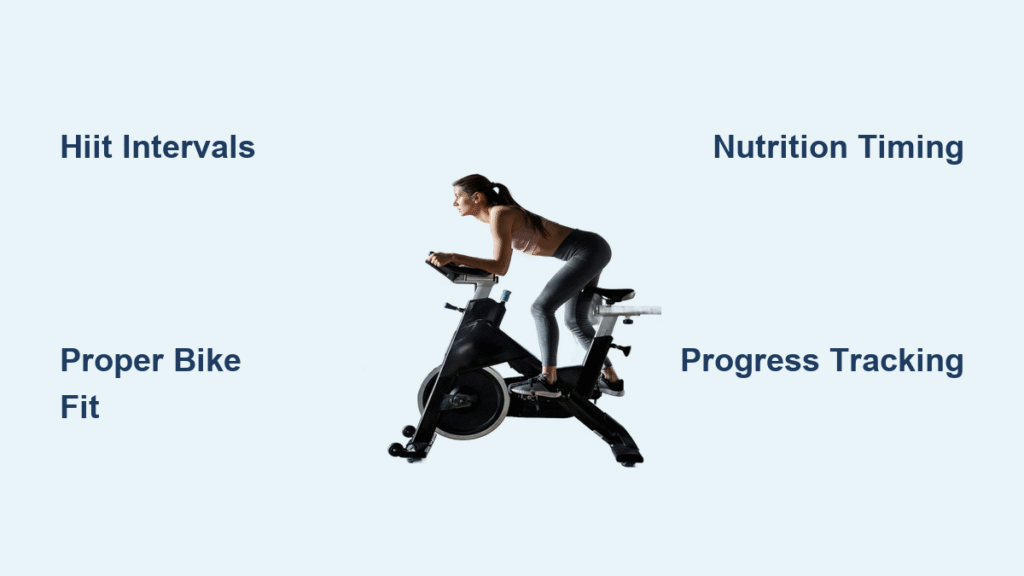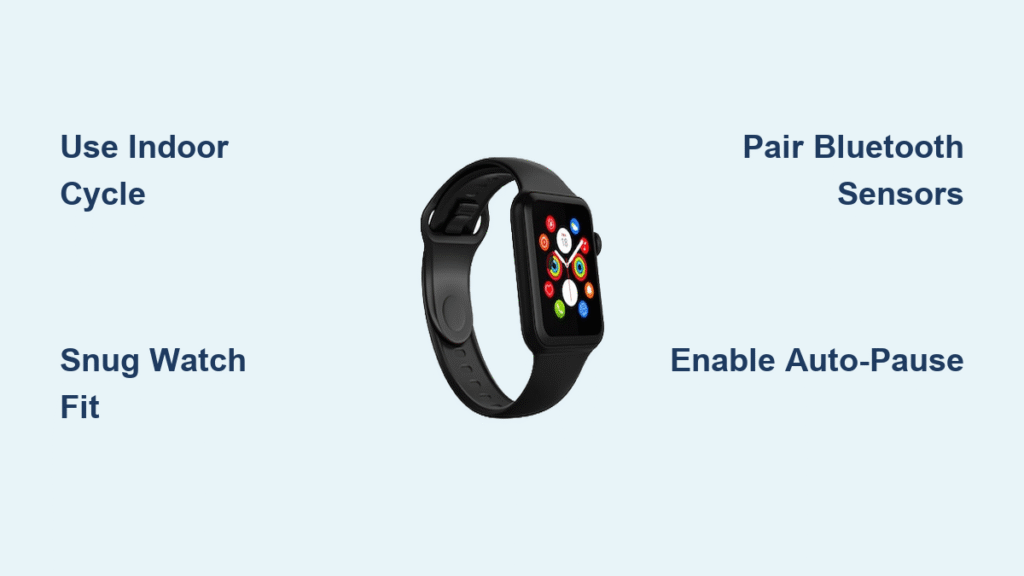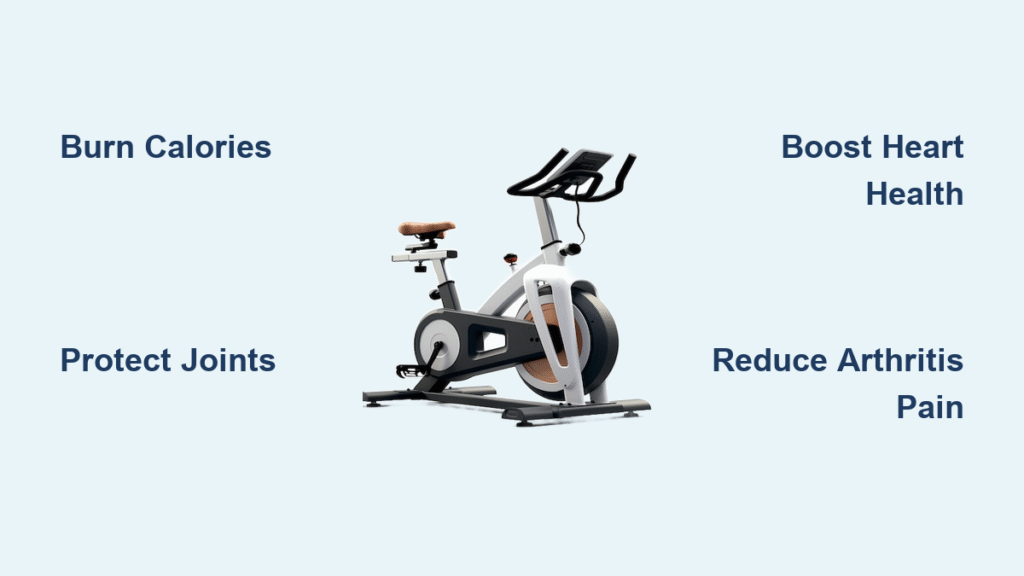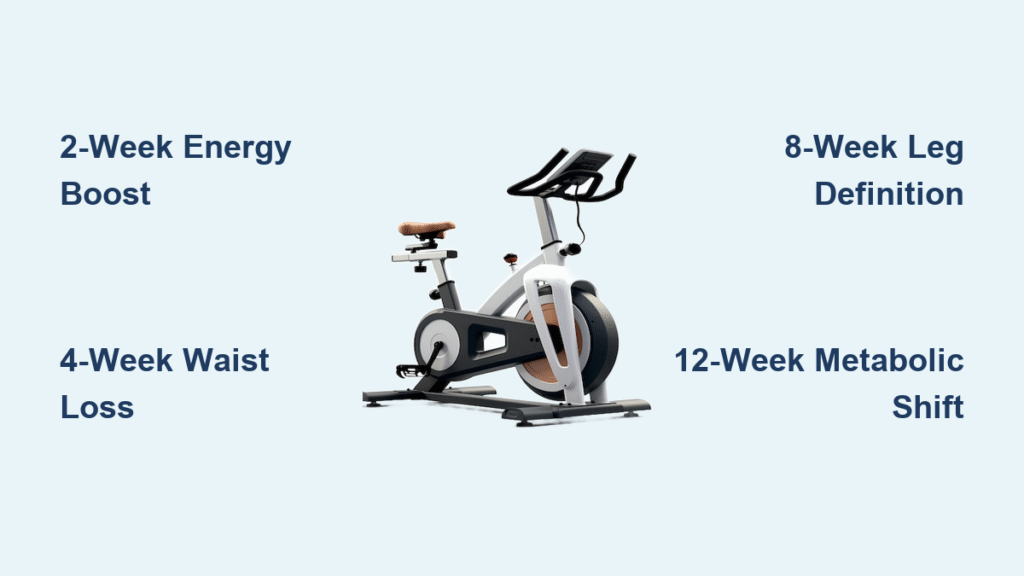You’ve tried the fad diets and crowded gyms, but your stationary bike remains the unsung hero in your weight-loss journey. When used correctly, exercise bike exercises to lose weight deliver science-backed results—burning up to 756 calories per hour for a 155-pound rider at vigorous intensity. Unlike running, cycling torches fat without pounding joints, making it sustainable for beginners and long-term fat loss. This guide reveals exactly which protocols melt stubborn pounds fastest, how to avoid common mistakes that sabotage progress, and the precise nutrition pairing that turns your bike into a 24/7 fat-burning machine. You’ll learn why three weekly 45-minute sessions create a 1,512-calorie deficit (nearly half a pound of fat weekly) and how to structure workouts so your metabolism stays elevated for 36 hours post-ride.
Why Cycling Burns More Fat Than Running
Harvard Health data proves vigorous cycling outperforms running calorie-for-calorie: A 155-pound person burns 378 calories in 30 minutes of intense cycling versus 252 calories running at 6 mph. The secret lies in EPOC (excess post-exercise oxygen consumption)—high-intensity bike sessions keep your metabolism elevated 24–36 hours afterward. A 2019 Medicina meta-analysis confirms indoor cycling improves body composition and lipid profiles when combined with modest diet changes. Three weekly 60-minute moderate sessions create a 1,512-calorie weekly deficit, translating to 0.43 pounds of pure fat loss. But push intensity higher: Vigorous cycling sessions (like HIIT) can exceed 750 calories per hour while protecting knees from impact injuries.
Select Your Fat-Blaster Bike Type

Your bike choice directly impacts calorie burn and consistency. Match your physique and goals to avoid discomfort derailing progress.
Upright Bikes: Core-Engaging Calorie Torcher
Traditional uprights force natural core activation during seated climbs and standing sprints. Their compact footprint fits small spaces while allowing position changes that prevent workout boredom. Ideal for balanced cardio and leg strength building.
Recumbent Bikes: Joint-Friendly Endurance Builder
Reclined seating redistributes weight off knees and spine—critical for beginners or those carrying 50+ extra pounds. The supportive backrest enables longer sessions (60+ minutes) at moderate intensity for steady fat oxidation without strain.
Dual-Action Bikes: Full-Body Metabolism Booster
Moving handlebars engage arms, shoulders, and chest while legs pedal, increasing calorie burn by 15–20%. This upper/lower body synergy spikes heart rate faster and builds muscle that elevates resting metabolism—perfect for time-crunched riders.
Indoor Cycles: HIIT Powerhouse
Heavy flywheels (40+ pounds) simulate outdoor inertia for explosive standing climbs. Weighted resistance triggers rapid heart rate spikes essential for EPOC-driven fat loss. Prioritize models with heart-rate compatibility to nail precise intensity zones.
HIIT Protocols That Torch 400+ Calories in 30 Minutes

Science shows HIIT burns 28.5% more fat than steady-state cardio. These protocols maximize results in minimal time:
30-20-10 Fat-Melting Method
- How it works: 30 seconds moderate → 20 seconds high → 10 seconds all-out (no rest between)
- Execution: Complete 5 rounds (5 minutes), rest 2 minutes, repeat 3–4 times
- Intensity: RPE 5 → 7 → 9–10 (Rate of Perceived Exertion)
- Why it works: The escalating intensity mimics natural terrain changes, keeping muscles guessing and metabolism revved.
Tabata Sprint Intervals
- Structure: 20 seconds max effort / 10 seconds rest × 8 rounds = 4 minutes
- Repetition: Repeat 4–5 times with 1-minute rests between blocks
- Calorie burn: 400–500 calories for a 155-pound rider in 30 minutes
- Pro tip: Focus on explosive standing sprints during work intervals—sit only during rest.
Heart Rate HIIT for Precision Fat Loss
- Work: 1 minute at 76–85% max heart rate (MHR = 220 – your age)
- Recovery: 2 minutes at 60% MHR
- Cycles: 6 repetitions = 24 minutes of targeted fat-burning work
- Visual cue: You should be gasping during work intervals but able to speak short phrases during recovery.
Beginner’s 4-Week Jumpstart Plan
Weeks 1–2 build foundational endurance without burnout: Start with 25–35 total minutes (5-minute easy warm-up, 15–20 minutes at RPE 6/10, 5-minute cooldown). Critical mistake to avoid: Adding time too fast—increase duration by just 1 minute every 3–5 days. By week 4, you’ll comfortably handle 45-minute sessions burning 400+ calories.
Week 3–4 progression: Integrate 30-second speed bursts every 5 minutes during moderate sessions. These “taste-of-intensity” intervals prepare your body for full HIIT while preventing mental fatigue. Track your resting heart rate weekly—drops indicate improving cardiovascular fitness even before scale changes.
Your 7-Day Fat-Loss Cycling Schedule

| Day | Cycling Focus | Duration | Intensity | Critical Pairing |
|---|---|---|---|---|
| Monday | HIIT | 30 min | Vigorous | Zero added carbs post-ride |
| Tuesday | LISS + Strength | 45 min | Moderate | 30g protein within 30 min |
| Wednesday | HIIT | 30 min | Vigorous | Hydrate with electrolytes |
| Thursday | LISS Recovery | 45 min | Light | Focus on fiber-rich meals |
| Friday | HIIT | 30 min | Vigorous | Post-ride stretching |
| Saturday | LISS + Strength | 60 min | Moderate | Carb timing around workout |
| Sunday | Rest | — | — | Active recovery walk |
Why this works: Total weekly cycling (225–270 minutes) meets WHO guidelines while alternating intense fat-burning days with muscle-preserving strength sessions. The 2:1 HIIT-to-LISS ratio prevents overtraining—a common reason beginners quit.
Nutrition Rules That Double Your Bike Results
Exercise bike exercises to lose weight fail without strategic nutrition. Never “eat back” exercise calories—TDEE calculators already include them. Your target: 500–750 calorie daily deficit from diet plus exercise combined.
- Protein priority: 2 grams per kilogram body weight (e.g., 180g for 200-pound rider) prevents muscle loss
- Carb timing: 3–5 grams per kilogram on training days, focused 90 minutes pre- and post-ride
- Fasted morning LISS: 30–45 minutes at 60–65% MHR boosts fat oxidation by 20%—but skip if light-headed
Real-world example: A 200-pound rider doing three 45-minute HIIT sessions needs 400g carbs, 180g protein, and 65g fat for a 2,500-calorie training day. Track coffee creamers and sauces—they sabotage deficits.
Fix These 3 Bike Fit Errors Sabotaging Your Weight Loss
Poor positioning burns fewer calories and causes injuries that derail progress.
Seat Height Mistake
Problem: Knees fully extending or excessive bend during pedal stroke
Fix: Stand beside bike—seat top should align with hip bone. When seated, knee maintains 25–30° bend at bottom stroke. This maximizes glute/hamstring engagement (burning 15% more calories) and prevents knee pain.
Handlebar Positioning Error
Problem: Lower back strain or neck pain after 20 minutes
Fix: Raise handlebars to level with or slightly above seat. This reduces spinal compression during long LISS sessions, letting you ride longer without discomfort.
Foot Placement Flaw
Problem: Numb toes or inefficient power transfer
Fix: Center ball of foot over pedal spindle. Straps should secure feet without cutting circulation. Proper alignment engages glutes harder—key for fat-burning posterior chain activation.
Track These Metrics When the Scale Stalls
Weight fluctuates daily, but these reveal true fat loss:
– Power output: Track watts/kg—rising numbers mean fitter body at lower weight
– Resting heart rate: Measure each morning; drops indicate cardiovascular improvements
– Non-scale victory: Complete a 40-minute HIIT session at 2.0 watts/kg (calculated as total watts divided by body weight in kg)
Pro tip: Take weekly progress photos in consistent lighting. Visual changes often appear before scale movement—critical for motivation during plateaus.
Your 4-Week Progressive Plan to Break Plateaus
Week 1: Baseline building
– Mon: 20-min Tabata ×4 blocks
– Wed: 45-min LISS @ 65% MHR
– Fri: 30-20-10 protocol ×2 blocks
– Sat: 3×8 compound lifts (squats, presses)
Week 2: Volume increase (+10%)
– HIIT sessions extend by 5 minutes
– LISS duration jumps to 50 minutes
– Strength moves to 3×10 reps
Week 3: Intensity surge
– LISS shifts to 70% MHR
– HIIT uses 2:1 work-rest ratios
– Strength training: 4×6–8 heavier weights
Week 4: Strategic recovery
– Reduce cycling volume 20%
– Maintain intensity but shorten duration
– Focus on perfect form and mobility
Your exercise bike isn’t just cardio equipment—it’s a precision fat-loss tool when wielded correctly. By implementing these science-backed exercise bike exercises to lose weight, you’ll burn 600+ calories per hour safely while building lean muscle that accelerates metabolism. Start with Week 1 of the progressive plan, nail your bike fit to prevent injuries, and pair every ride with strategic nutrition. Within 30 days, you’ll see visible changes in energy, clothing fit, and body composition—not just scale numbers. The most effective weight-loss tool you own is already in your home; now you have the exact protocol to make it work. Hop on tomorrow and ride toward your strongest self.




